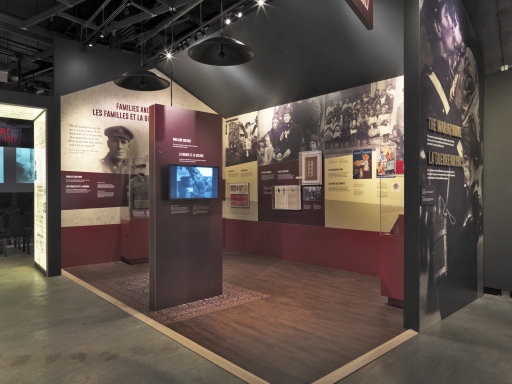A new exhibition at the Canadian War Museum in Ottawa focuses on the domestic demands of the First World War, culminating in a political crisis over conscription.
‘The Home Front, 1917’ considers the tensions caused by more than three years of conflict as Canadian troops fought in support of Britain and her allies overseas.
Nationwide unrest was sparked by the Government’s decision to introduce conscription, having promising not to do so.
Prime Minister Sir Robert Borden had ruled out compulsory military service in 1916. But just a year later, he became convinced that it was the only way of maintaining Canada’s fighting strength.
Voluntary enlistment was drawing too few recruits to replace the soldiers being killed or injured. Between March and August 1917, 28,018 men joined up; casualties totalled 42,389.
The Museum notes: “This 1917 political firestorm exposed the deep rift that existed between Canadians who viewed compulsory military service as necessary to win the war, and those who saw it as a gross violation of individual rights.”
Interactive elements, an audiovisual presentation, artefacts, art, photographs, newspaper clippings are used to illustrate the passionate opinions aroused by the Conscription Crisis.
Alienation
A bitterly contested federal election in December 1917 was followed by the Easter 1918 riots in Québec City. Four people were killed when troops opened fire on a crowd, exacerbating French-Canadians’ sense of alienation and injustice.
But the trouble went wider than French-speaking Québec, where there had been less enthusiasm for the war from the start.
Thousands of angry farmers from Ontario, Québec, Manitoba and the Maritime provinces converged on Ottawa in May 1918 to condemn the Prime Minister’s broken promise to exempt farmers’ sons from overseas service.
In British Columbia, the pacifist union leader Albert ‘Ginger’ Goodwin was shot and killed by police, after going into hiding rather than reporting for military service.
His death sparked the 1918 Vancouver General Strike, which united workers across the city in a day of protest.
Sacrifice
‘The Home Front, 1917′ also examines the impact of the First World War on Canadian families, children, culture and industry.
The Canadian War Museum says it tells “stories of heartbreaking sacrifice and loss, as well as of resilience and determination through family letters, photographs and personal items, including medals presented to the mothers and widows of fallen soldiers.”
War-inspired toys, books and children’s clothing reflect the patriotic sentiments of the time.
Movies and popular songs demonstrate the pride Canadians felt when it came to their participation in the war effort, even as they questioned the conflict and lamented the heavy human toll.
Mark O’Neill, President and CEO of the Canadian Museum of History and the Canadian War Museum, said: “The First World War had particularly far-reaching effects that altered the very fabric of our young nation, and that continue to be felt and remembered a century later.
“This new content introduces a fresh dimension to our permanent exhibitions, sharing deeply personal stories about Canadian families, and shedding light on the social, cultural and political dynamics surrounding Canada’s role during the First World War.”
The Home Front, 1917 opened to the public on February 19th 2015, as a permanent part of the Canadian Experience Gallery 2 – For Crown and Country.
Information & images supplied by the Canadian War Museum, Ottawa
Posted by: Peter Alhadeff, Centenary News
